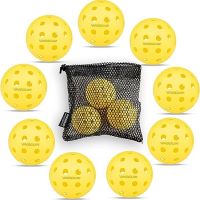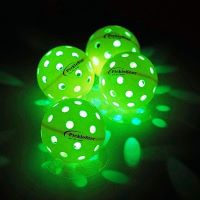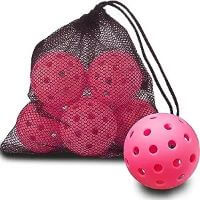Is it ok to switch hands in pickleball? Players often wonder if they should switch hands or change hands when they play pickleball.
In a nutshell, the answer is “yes,” but there is some nuance to the long answer. Changing hands is legal in pickleball, even during play, but many players (both recreational and professional) avoid it.
Learning when switching hands is a good idea, as well as its benefits and disadvantages.
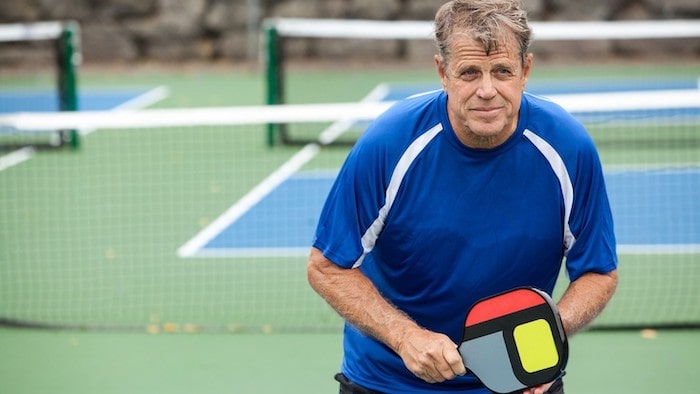
You Might Also Like:
Switching Hands in Pickleball
A common misconception among pickleball players is that switching hands during the game isn’t legal. However, this isn’t true because there is no rule prohibiting players from switching hands.
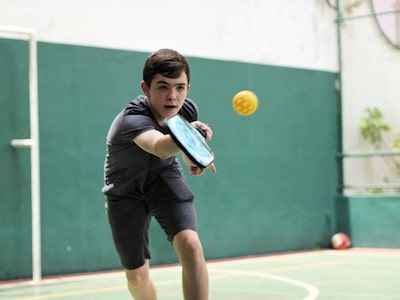
If you take a look at the official USAPA rulebook, you’ll discover that switching hands and stacking are completely legal. In other words, you can use right-handed shots, left-handed shots, or even double-handed shots depending on the situation.
There are, however, some players who discourage the use of this technique, especially among non-ambidextrous players. The reason for this is that shifting the paddle into their non-dominant hand tends to slow them down.
Should You Switch Hands in Pickleball?
In pickleball, using your off-hand to strike a more powerful forehand shot rather than your dominant hand for a backhand shot offers both advantages and disadvantages.
It comes naturally to most pickleball players to switch hands to tackle shots that require greater reach. Furthermore, Wes Gabrielson, Rick Whitsken, and Enrique Ruiz are famous for employing this technique perfectly in big games.
The effectiveness of this skill will determine whether you should switch hands or not.

Pros to Switch Hands
Playing pickleball with alternate hands gives you an edge over your opponent. Here are some advantages to switch hands –
- Increases Reach – You must cross your arm over your body when you do a backhand. Due to this, you can’t reach too far with your paddle. You could have increased your reach significantly if you switched to your other hand. Singles players can greatly benefit from increased reach.
- Protects a Weak Backhand – Among beginners, forehands are always more powerful and more controlled than backhands. Especially at the beginner level, minimizing unforced errors is key to winning games, so switching hands can be a better choice than playing your backhand.
- Requires Less Mobility – In addition to the first advantage, there is this advantage. As you can reach more of the court when switching hands, you will require less movement to cover more of the court. In particular, this is beneficial to those with limited mobility or injuries. You can, however, conserve your energy and stay focused longer by moving less during a game.
- Confuses Opponent – Players rarely switch hands during play. Pickleball is a game where you have an opportunity to confuse your opponent if you manage to do it. When your opponent shoots at your backhand, suddenly it becomes your forehand when they aim for the backhand.
Cons to Switch Hands
Switching hands might be beneficial in certain situations, but sometimes it does more harm than good. In particular, ambidextrous players have difficulty handling forehand shots with their non-dominant hands.
- Incompatible With Fast Exchanges—A player lacking dexterity and quick reflexes with their non-dominant hand may find it difficult to apply this technique during a fast exchange in the kitchen line. The best option in such a situation is to go for backhand shots with the hand already in use.
- Paddle Drop—Without sufficient practice, you may not be able to transfer the paddle properly during pickleball, resulting in you dropping it. As a result, you will look like a fool rather than like a pro.
- Confusion in Doubles – Switching hands could confuse your partner, resulting in a mishit. You might miss an incredibly easy shot if you instinctively switch hands to hit a middle shot that your partner is already aiming for with his dominant hand.
What Is the Best Time to Switch Hands?
Ultimately, all the disadvantages of switching hands can be overcome. For instance, avoid switching hands indiscriminately to prevent dropped paddles. When you know you have enough time, change hands deliberately. You can also change hands after serving or returning a serve.
Your paddle handle may be too long for you to pass it from one hand to another efficiently. Passing the paddle over to your non-dominant hand is easier if you hold the handle closer to the top. A weaker non-dominant hand will give you more control in this “choked up” position.
Lastly, practice makes perfect. Don’t forget to spend time outside of the game. Set up a portable pickleball net on your driveway or yard to get more practice in before you hit the switch in a real game if you don’t already have one.
You’ll have a unique strength in pickleball if you can eliminate all the disadvantages of switching. It will be a challenge to beat you!
FAQs
In pickleball, switching hands is legal. Neither are there any rules prohibiting it. Pros don’t often change hands on the pro circuit, which tells us how they think about switching hands when they play at high levels. Although it can provide you with a killer forehand (as a backhand), it is also difficult to master.
• Practice forehand shots with your other hand until it becomes second nature to you, as the saying goes: practice makes perfect. If you want to practice against another person, you can use a ball machine, a wall, or an actual partner. You can use your non-dominant hand more effectively by strengthening the neuronal pathways controlling it.
• To quickly switch hands, grip the paddle with both hands. By doing this, you will not have to transfer the paddle from one hand to another.
One-handed backhands have been used since the game was created, of course. The two-handed backhand has become increasingly popular in recent years, especially among female pickleball players with tennis backgrounds.
Wrap Up
By switching hands in pickleball, you can increase your reach, require less mobility, and even confuse your opponent. Nevertheless, there are many possible disadvantages, such as dropping your paddle or covering a weak backhand. With the right amount of practice and caution, you can use the ability to switch hands to your advantage in your pickleball game.

I am a professional physiotherapist and the author of the BallSportsPro. I worked with athletes of all levels, from amateur to professional, and i helped them overcome injuries and improve their performance. I am a certified Pickleball instructor and has been playing the sport for over 10 years.

